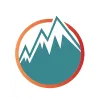Take a look inside 12 images
High-Adventure Science
Pros: Marvelous, free critical-thinking activities; simple setup for teachers; interesting interactive models; covers relevant, current scientific questions.
Cons: Might be challenging to use the curriculum offline.
Bottom Line: Provides a crucial and timely earth science backdrop to lessons on analysis, data, and modeling that are important for all students to grasp.
Start by creating a class in High-Adventure Science and populating it with your students. Then you can assign lesson modules, pre- and post-tests, and interactive models. By starting with the pre-tests, you can gauge how well your students already analyze and synthesize data before moving on to the main content, the modules. The post-test afterward will show how much they have learned. Some of the modules are self-scoring, and the answers and rubrics for the others are included in the teacher guides. There are also tips on how to help your students interpret the data in the modules, along with plenty of background information to provide context. Both modules and each activity list an estimated completion time, but actual time required will vary by student and class. As your students progress through the assignments, you can visit your teacher dashboard to see each student's progress in the assigned tasks, and you can examine each question and exercise individually as well.
As a free website with a simple but helpful teacher dashboard, this is an easy resource to justify working into your curriculum, as it teaches students about important scientific questions of our day and about constructing arguments based on actual data, as well as evaluating how certain they are about those arguments. It's perfect to integrate into your lessons near the beginning of the school year, since it teaches ways of examining data and facts that will benefit students throughout the year.
High-Adventure Science is a set of six modules focused on earth science topics within the larger collection of STEM resources from The Concord Consortium. Each module asks an important unanswered scientific question that scientists are actually studying today, such as, "What is the future of Earth's climate?" and "Can we feed the growing population?" Within each module is a set of exercises that study real-life scientific data. Each begins with a lesson on how to construct arguments and then challenges students to analyze graphs, charts, and diagrams in order to answer important questions. They answer a multiple-choice claim question, give a short-answer explanation of why they chose that answer, then rank how certain they are about the answers they've given based on the models and data, and finally explain why they chose their certainty rating. Students practice scientific argumentation throughout these lessons, which is the practice of making evidence-based claims about scientific questions. Each module has pre- and post-test options, along with interactive computer-based models for students to play with to learn how all of the system elements interact and influence each other.
High-Adventure Science includes multiple layers of learning: in the earth science subject matter, during the act of analyzing the data, and in making and defending claims. It's an organized, systematic walk through different hard-to-answer questions about our world and universe, though it may be hard to adapt to offline instruction. Along the way, students learn how to evaluate scientific data, learn why we know what we know, determine what we can guess about the future, and discover how uncertainty is OK and how to measure it. Students will learn both about the science of the included topics and the methods and methodology of research, analyzing data, and studying computational models. Information is presented in text, video, graph, and data form, including hearing from scientists who are already working on these questions.
Each module begins with a lesson on how to construct arguments, so all students start off with the right tools to complete the rest of the module. Students will practice scientific argumentation and then rate their certainty about their claims, explaining how they determined that rating. During the modules, students use simplified interactive models to help them understand the underlying science, such as how greenhouse gas concentration and atmospheric temperature would change over time if we increased or decreased human emissions. Students aren't expected to be able to answer the big, unanswered scientific questions by the time they're done with the curriculum (scientists don't have the answers yet either), but it does teach them to be more comfortable with both their projections and their uncertainty.





















